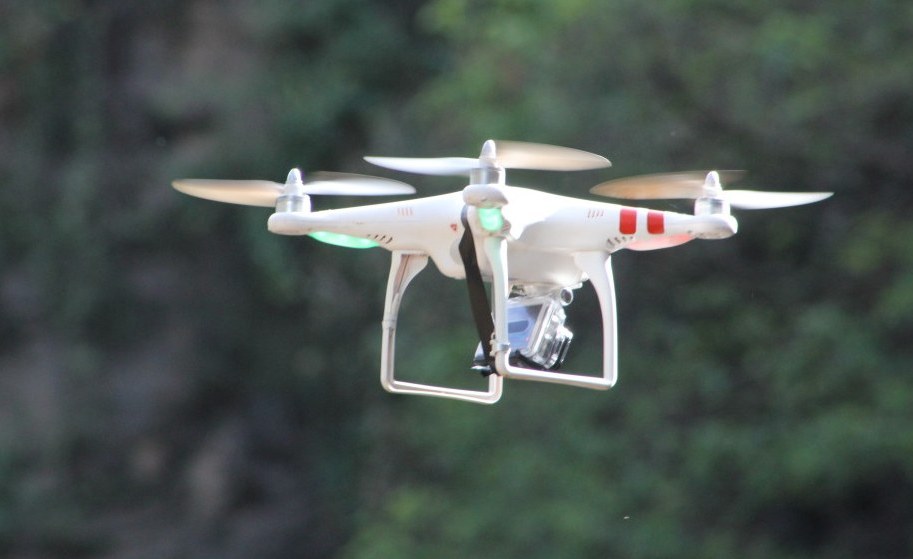Drones and the Law in Kenya
- Victor Nzomo |
- March 6, 2015 |
- CIPIT Insights,
- Information Technology

A drone similar to this one fitted with cameras can often be seen flying over Uhuru Park during large public events
Recently, the Government through the Kenya Civil Aviation Authority (KCAA) issued the following circular “for information, guidance and necessary action”.
The 2015 Circular reads in part as follows:
“ACQUISITION AND OPERATION OF UNMANNED AERIAL VEHICLES IN KENYA
The Government of Kenya has noted with concern the proliferation of unmanned aerial vehicles (UAVs) in the Kenyan Airspace that are operated by various entities or individuals.
With immediate effect all Government, private institutions/entities or individuals intending to test, operate or procure UAVs should first seek approval from the Ministry of Defence”
A plain reading of this Circular is that the Government proposes to regulate unmanned aerial vehicles (UAVs) affectionately known as ‘drones’ the same way it regulates guns, for instance. According to media reports, KCAA has stated on the record as follows in relation to drones in Kenya:
“It is true that we don’t have regulations. So the authority is not licensing any drones at the moment. In fact, any drone or small aircraft seen at public functions is being operated illegally”
KCAA is reportedly in the process of coming up with Regulations on the operation of drones in consultation with several key Ministries including Transport, Defence, ICT and Communications, among others.
From a legal standpoint, this blogger submits that the Circular is an important first step and that the use of drones in Kenya raises several important issues that should be considered in the making of Regulations.
In the case of drones at Uhuru Park during public functions, what happens if a drone loses power or malfunctions, or is improperly flown and comes down on somebody’s head? What if two drones covering the same public event collide? According to media reports, a court in Oloitoktok, Kajiado County recently handed down a fine of Shs 50,000 to an Austrian national for operating a remote controlled aircraft at Amboseli National Park. It is reported that the Austrian pleaded guilty to operating the device in a manner that endangered people, property and other aircrafts. Could this be the first court precedent in the area of drones and the law? This blogger wonders under which Act the Austrian was charged and the specific offence alleged to have been committed?
For drone inventors and owners, it may be argued that this Circular curtails their enjoyment of their private property. With the uptake of drones in Kenya, this blogger is skeptical whether the Ministry of Transport has the budget, infrastructure and skilled manpower to regulate drones in the same way it regulates personal cars on Kenyan roads. Furthermore, this form of regulation would have a chilling effect on innovation in the drone industry and its applicability in various sectors of the economy in Kenya. One such sector is wildlife conservation. According to media reports, a wildlife surveillance drone project by Ol Pejeta Conservancy dubbed ‘Aerial Ranger’ had been halted by the Government for national security reasons. To ensure proper regulation of drones in Kenya, the legal framework must take into account various categories of drone operations by: hobbyists and other recreational users, government agencies, non-recreational users such as Ol Pejeta and commercial users such as delivery companies.
Be it as it may, there are many reasons why a proper legal framework is needed to regulate drones in Kenya. Let’s begin with the elephant in the room: Property rights.
Long ago, before mankind thought of flying machines, let alone drones, the Latin maxim was coined, “cujus est solum ejus usque ad coelum”. This rule may be translated as: “Whose is the soil, his it is up to the sky” or simply “He who possesses the land possesses also that which is above it”. Other interpretations are: “He who owns the soil owns everything above (and below) from heaven (to hell)” and “He who owns the land owns up to the sky”.

Therefore with this maxim in mind as well as Article 40 of the Constitution on Right to Property, this blogger foresees interesting disputes arising between land owners and drone owners.
Under the law, land owners may require that drone owners do not operate their drones over their land. If a drone flies over privately owned land, is that trespassing? Can a land owner shoot down a drone for trespassing? These questions would impose additional obligations on the regulator KCAA to ensure that licensed drones are restricted from flying over certain privately owned land. In addition KCAA would also have to keep a publicly accessible register of all licensed drone owners and their locations.
Several other interesting areas of conflict between the public and drone users would be privacy and environment enshrined under Articles 31 and 42 of the Constitution.
